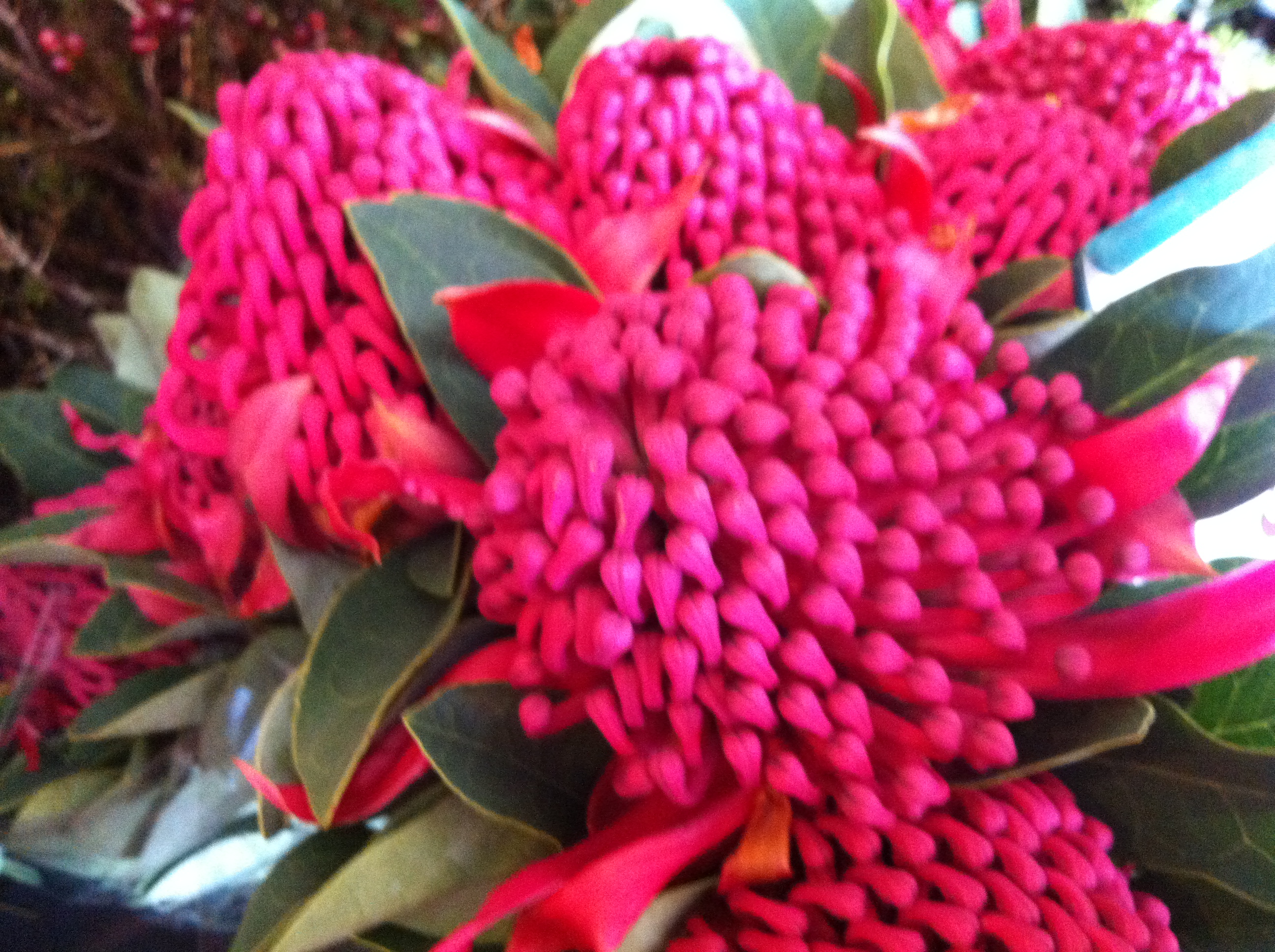Blog
Wonderful Waratahs

Wonderful, spectacular, unique Waratahs are now in flower and putting it out there for your enjoyment in the bush, gardens and through suppliers of cut flowers.
Waratahs belong to the Telopea genus of the Proteaceae family, so they’re related to Banksias, Leucospermums and Leucadendrons. There are only four species of Waratah. They originally come from drought-prone woodland areas of south east Australia, but now feature widely in gardens where they prefer dappled light (as they get in woodlands) and sandy, slightly acid soil which is well drained. Like Banksias, Waratahs have evolved in Australia’s ancient phosphorus-poor soils and gardeners need to ensure they don’t kill them by giving them inappropriate fertiliser with too much phosphorus in it.
Most people are more familiar with the red Waratah than the white, pink and cream specimens, but they are equally as stunning.
Influential and widely loved modernist artist and printmaker Margaret Preston spent years capturing the essence of Waratahs, Banksias and other Australian plants through her prodigious work. Many people who have never seen a Waratah growing or as a cut flower are familiar with its form and colour through her work.
If you’re bringing a Waratah flower into your home to enjoy, choose a flower with some, but not all, florets open. The flower should come with fresh green leaves. When you get it home, re-cut about 2cm–4cm from the stem with sharp secateurs and get your flower into cold water quickly. Waratahs don’t need flower food, but they do need clean water (maybe with a little dilute bleach solution in it) daily.
Waratahs are affected by ethylene, so keep them away from ripening fruit, car exhaust fumes and cigarette smoke. Keep them cool and surrounded by some fresh air and they might just last for three weeks.